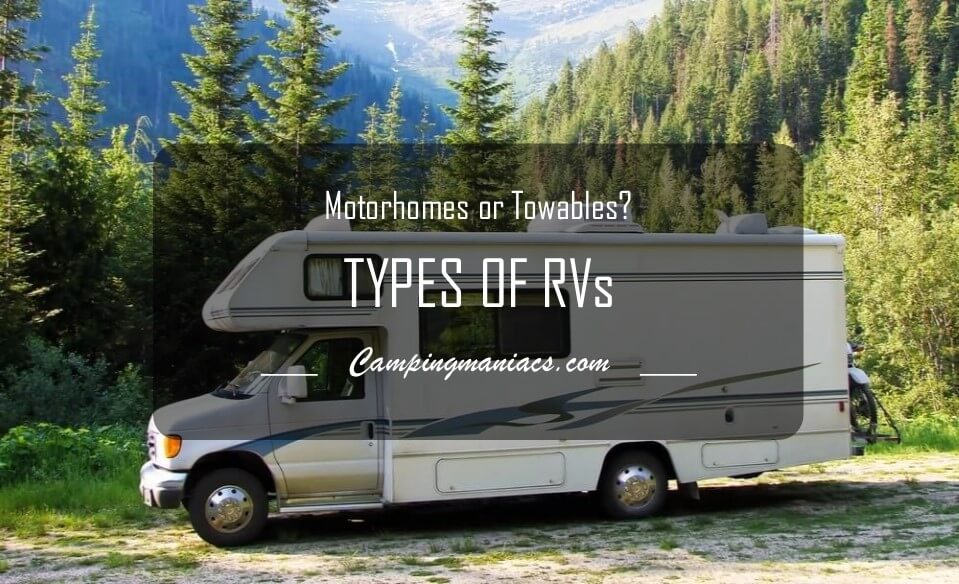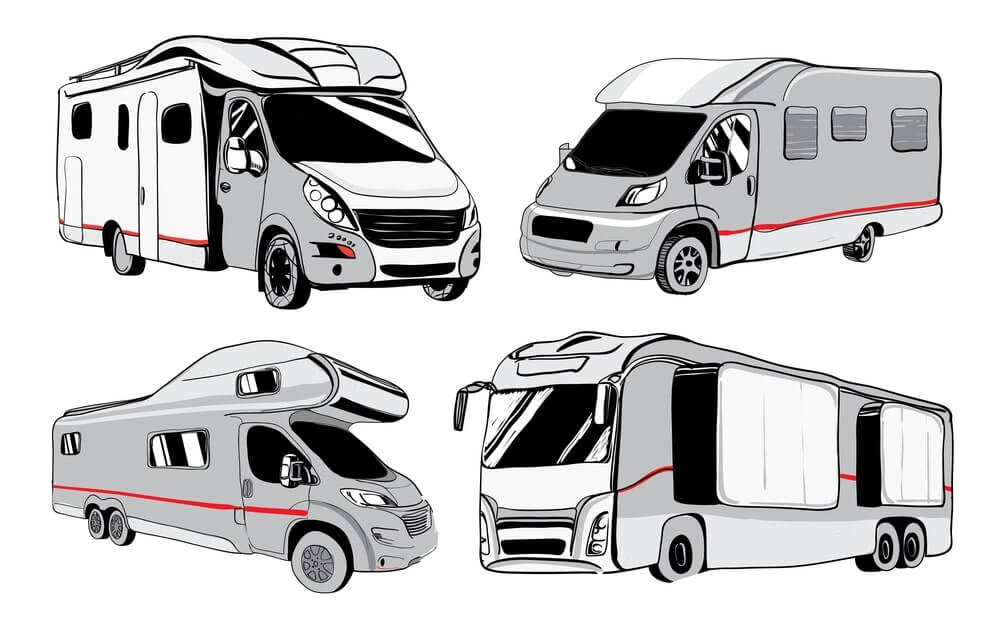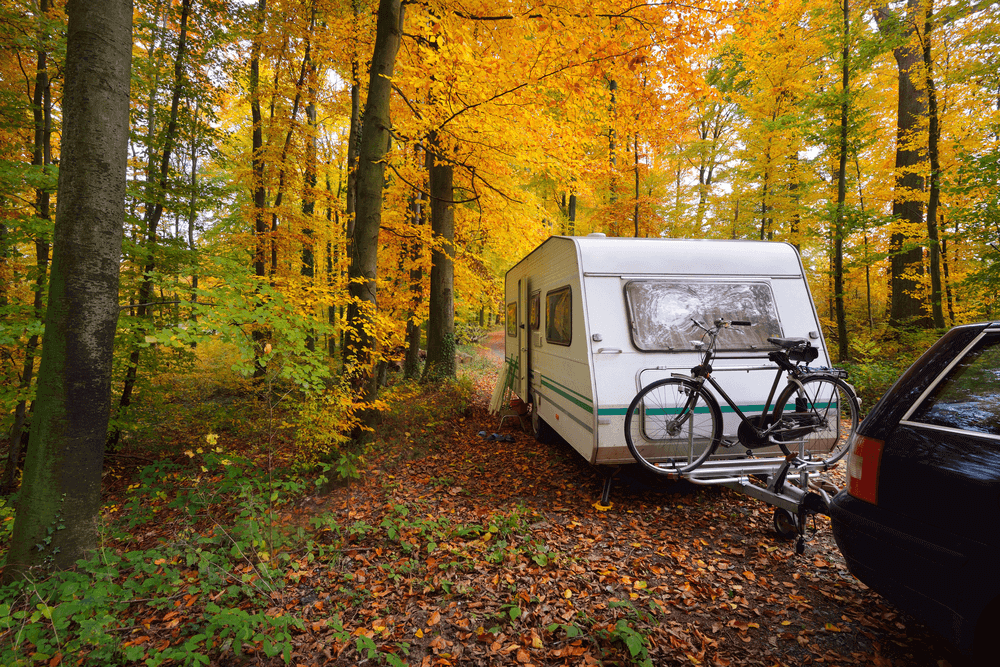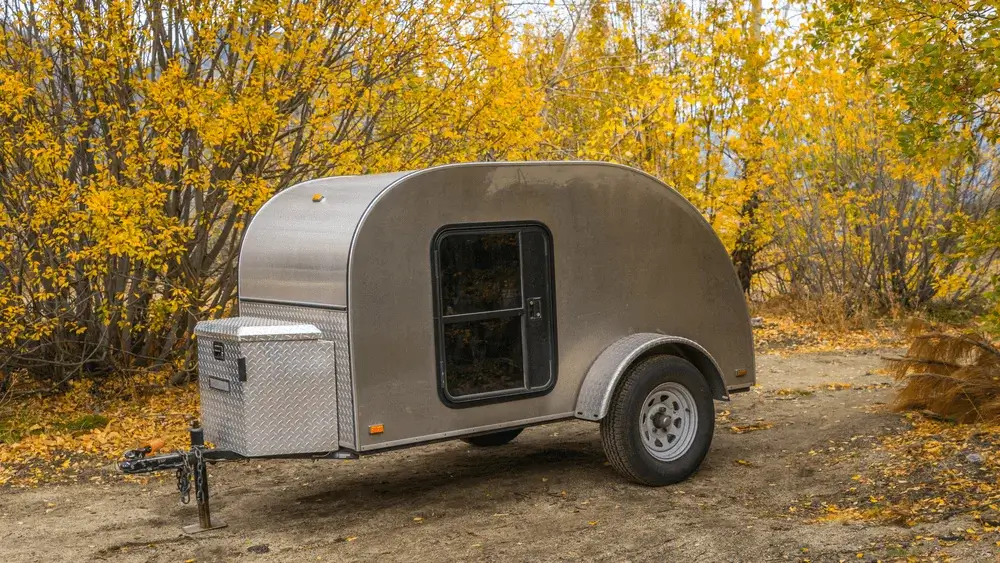- Camping Tips
- Hiking Tips
- RV Camping
- Destinations
- Blog
- Gear Reviews

Recreational vehicles (RVs) are self-motorized vehicles or trailers mainly used for camping or other temporary accommodation purposes. RVs may feature only sleeping quarters, cooking facilities or even extra features like televisions, satellite receivers, specialized storage for equipment, air conditioning, and so on. Some examples of RVs include fifth wheel trailers, toy haulers, tent trailers, camper vans, teardrop trailers among others.
So whether on a lone-wolf expedition, family vacation or just a road trip with friends, you can find different types of RVs for all your travel needs. Thor Industries website has a quick tool to get you started.
Over the years, RVs have grown tremendously popular since their advent back in the 18th century. Their primary goal has always been provision of transitory accommodation. However, most people take full residency in these mobile “homes” given their accompanying features and amenities. In the US, RVs are most commonly used by people of an average age of 45 (as of 2016). RVs have also proven to be a favorite of anyone escaping the harsh winter climate to warmer regions especially for residents in the United States and Canada.
A general prerequisite before owning an RV is checking the laws of the land regarding the matter. The stipulations will mostly be different in various states, so make sure to adhere to all of them. For instance, in UK, you may be required to get a second license before hooking up a trailer or getting a motorized RV especially if meant for commercial purposes. In the US, various states will also stipulate on the required RV’s total length, height, trailer length, parking regulations among other specifications.
Apart from your budget, other factors to consider before getting an RV include:
Recreational vehicles are divided into two major categories: motorized and towable RVs. The motorized RVs are also known as motorhomes while the towable ones may be referred to as non-motorized RVs.

As a general definition, the motorhomes are the recreational vehicles whose residence cabins are a part of the vehicle. As such, these vehicles can self-motorize.
The Class A motorhomes is in every detail the belle of the ball in the world of RVs, a true form-meets-function example. They are constructed on a specialized bus chassis making the end product resemble a public transit bus. Their large front windows offer an exceptional view of the road.
Class A RV type, also known as coaches, come with a variety of amenities and may use diesel fuel or gasoline. Some notable brands in these category include Fleetwood Flair, Monaco Signature and Tiffin.
Built using a standard van, Class B motorhomes are basically vans that have been transformed into smaller RVs. Class B RVs are most commonly referred to as campervans. They feature a raised roof or a coach-built back and are built to offer comfy sleeping quarters for one or two travelers.
Some states like California stipulate that a vehicle must have a refrigerator, a heater or AC unit, a cooking system, a toilet and a fuel system, to qualify as a Class B RV. Ford Trader, Toyota Hiace, Isuzu NPR 300 and Iveco are a few brands that dominate the campervans market.
This RV type is the middle ground in relation to coaches and campervans. It spots a unique cab-over profile which houses part of the sleeping quarters, storage space or entertainment section. Class C RVs are built upon a truck chassis or larger van and have enough space to accommodate four to eight people comfortably. Winnebago, Jayco Redhawk, Ford and Thor Chateau are a few of leading brands of Class C RVs.
A toterhome is a high-end motorhome, in fact one of the most expensive RV type yet. It abandons the coach style for a more functional, sturdier design. A toterhome offers ample space for amenities, luxury facilities and so on given its immense size. The biggest drawback to this type of RV is inescapably the price tag.
A Class B+ RV on the other hand, closely resembles a Class C RV but without a bunk above its cockpit. Its cab is mainly used for entertainment purposes. You still get a fairly large interior space plus a better road/landscape view and a low-profile design. Possible back end scraping due to its low-profile and a limited storage space are a few of the limitations of the Class B+ RVs.

Towable Rvs are defined as non-motoized recreational vehicles. They are mainly a cabin with amenities and meant to be towed away by a motorized vehicle.
Generally, towable RVs are more advantageous over motorhomes mainly due to the following reasons:
Made on top of a standard trailer structure, travel trailers are basically large containers with living spaces and accompanying amenities. They offer an “empty” space for you to fill with as many conventional appliances or luxurious items as they can fit. Travel trailers come with their own water supply systems, small refrigerators and bathrooms. Some have expandable fittings for even more room.
The trailer connects with your typical ball hitch receiver and can be pulled by a van, truck or SUV. A travel trailer may be ideal for small families as well as fulltime RV-ers.
It resembles a travel trailer but with one distinctive feature: a fifth wheel trailer has a gooseneck connector that attaches to your towing vehicle. The connector makes all the difference as it is sturdier, centered and easy to manage than ball hitches. This results in easier maneuverability and easier towing. The overhanging part of the trailer offers extra interior space which is not an option in standard travel trailers. The towing vehicle must have an open or flat bed.
Tent trailers are the smallest towable RVs yet. They spot collapsible partitions for ease of storage when not in use. Some folding camping trailers are built of durable tent canvas or with rigid composite walls that can be folded down. Tent trailers are easily maneuverable, lightweight and can be towed by small trucks, full sized sedans and station wagons using suitable ball hitch receivers.
They offer the bare essentials for survival, hence tenting trailers are ideal for the once-in-a-while camping adventure.

Sport Utility RV trailers feature a rear compartment that is used to store snow mobiles, ATVs, dirt bikes, and sports vehicles. The trailer helps you to haul your toys to wherever you want. Other features of these trailers include front compartment for the living space, portable garage space and a folding wall that can be used as a loading ramp. These are the ideal RVs for camping on motorsports events. However, these toy haulers have less usable interior spaces given the proximity to odor-prone sections, motor supplies and motorized equipment.
For long off-the-grid travelling, Truck Campers are your best pick of the lot. Featuring four-wheel-drive functionality and a robust suspension equals to limitless off road adventures in expense of storage space. Included are the basic amenities, a rear door and in some models an overhead sleeping cabin as well as slide outs. They are ideal for one to three people.
Teardrop RV trailers are compact, lightweight trailers with basic amenities such as a kitchen, dining table, couch, bathroom and bed. They are easy to position in campsites and can be towed by many different vehicles. The limited storage and height of the trailer may be a drawback to some. However, it makes up for it in ease of maneuvering.
There are so many models, types of RVs available in the market, each built to suit your specifications. Whether you want a giant motorhome to carry your not-yet-street-legal Porsche 911 Carrera everywhere you go or just a compact pop-up trailer for your next camping trip. There’s always a suitable RV type for your needs in the market.
Charlie Leone
Website Owner/Editor
Welcome to CampingManiacs